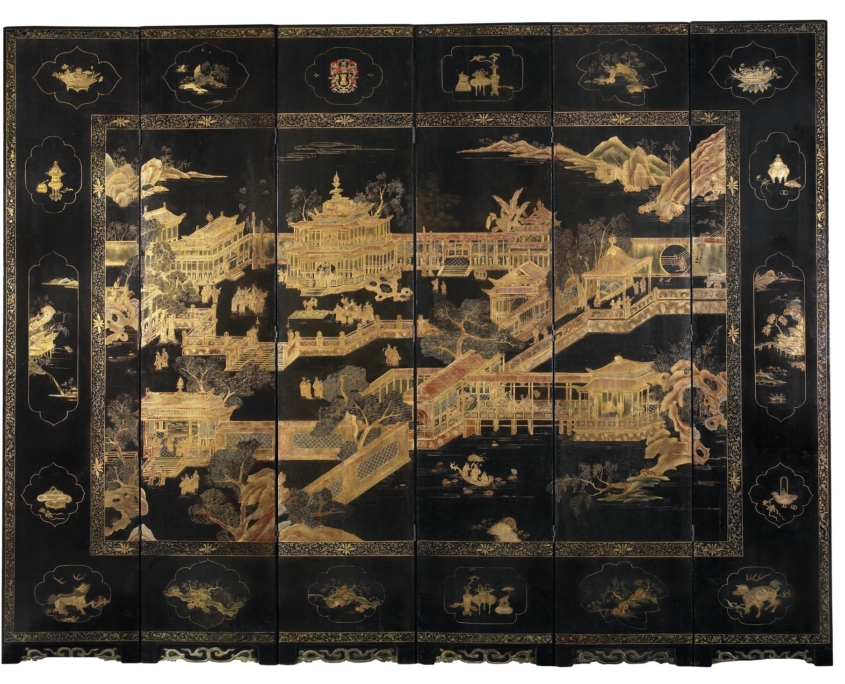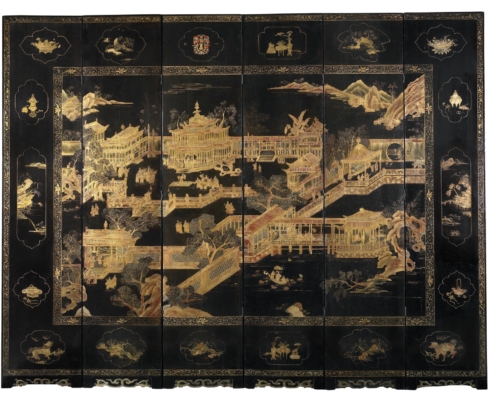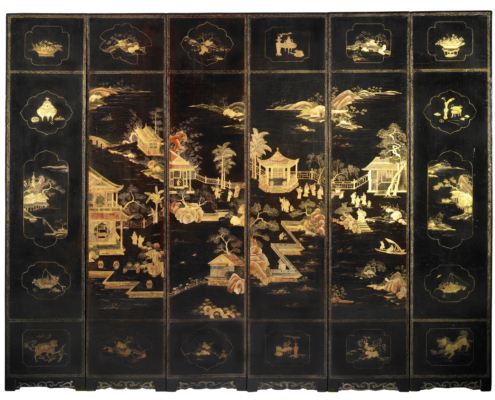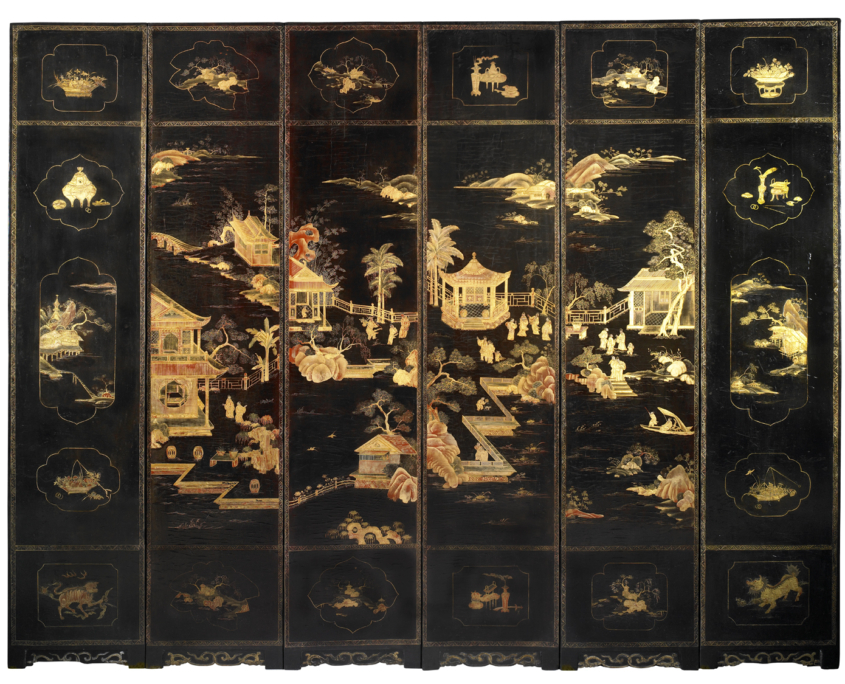CHINESE LACQUER FOLDING SCREEN – QING, 1730
Reference: D/2013-110
Six-fold black and gold Chinese lacquer screen decorated on both sides. It features a rich architectural decoration.
Each side features a scene of a palace – possibly the Old Summer Palace in Beijing – with numerous figures, and a leaf-by-leaf decoration of pagodas in gardens with figures. The scenes are surrounded by medallions of animals, landscapes and objects, one of which bears the coat of arms of the Tower family of the British East India Company.
China – 18th century, ca. 1730 (Qing dynasty)
Height: 94.5 in / 238 cm – width: 118.1 in / 300 cm (one fold, 19.7 in / 50 cm)
On one side, a court scene set in a palace surrounded by a lake and mountains, animated by numerous figures. Among them are a group of musicians gathered around a dancer, giving a show to the dignitaries at the entrance to the central pavilion; a couple comfortably seated in a boat protected by a canopy and sailing on a small lake; children watching hens under the amused eye of their mothers or nurses; strollers strolling through the garden. Guards patrol between the pavilions, servants bring meals and so on.
The central decoration is surrounded by a rich border decorated with medallions depicting animals, landscapes and objects.
The second side is decorated on a black and gold lacquer background with pagodas and small pavilions with figures in a garden. The border features the same animals, landscapes and objects as on the first side.
In addition to the high quality of its workmanship and its exceptional decoration, what makes this screen so special is the presence of one of the central cartouches depicting a European coat of arms. The coat of arms features a winged griffin surmounting a tower and bearing the motto “Love and Dread”. This is the coat of arms of the Tower family, originally from Essex and owners of Weald Hall.
The screen was acquired by John Tower (1778-1839), an admiral in the Royal Navy. It was common for great European families to order objects, porcelain and furniture from the various Companies present in India and China, and to have them personalised with their family coat of arms. This screen was probably part of a major order placed by the Tower family with the British East India Company (EIC).











